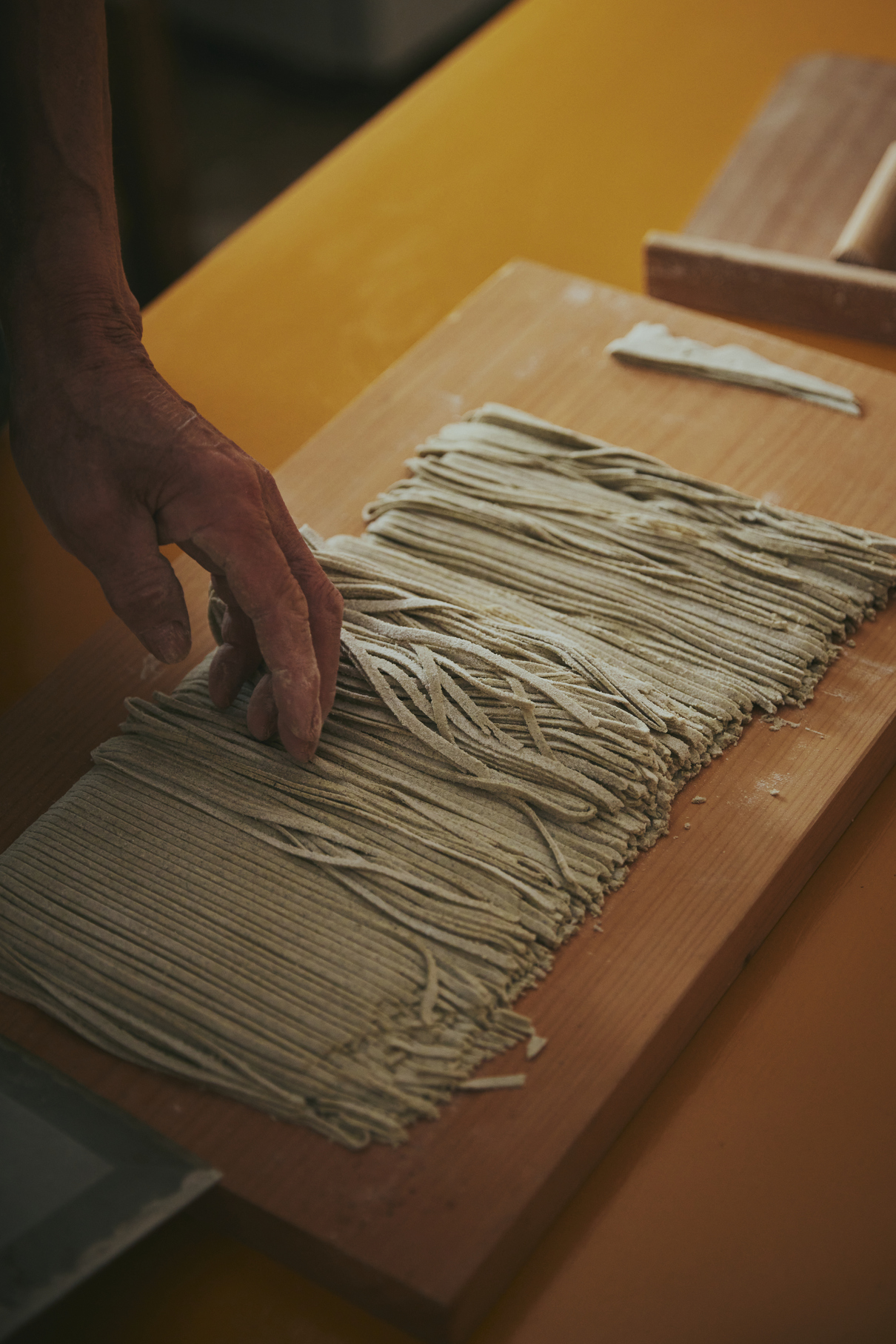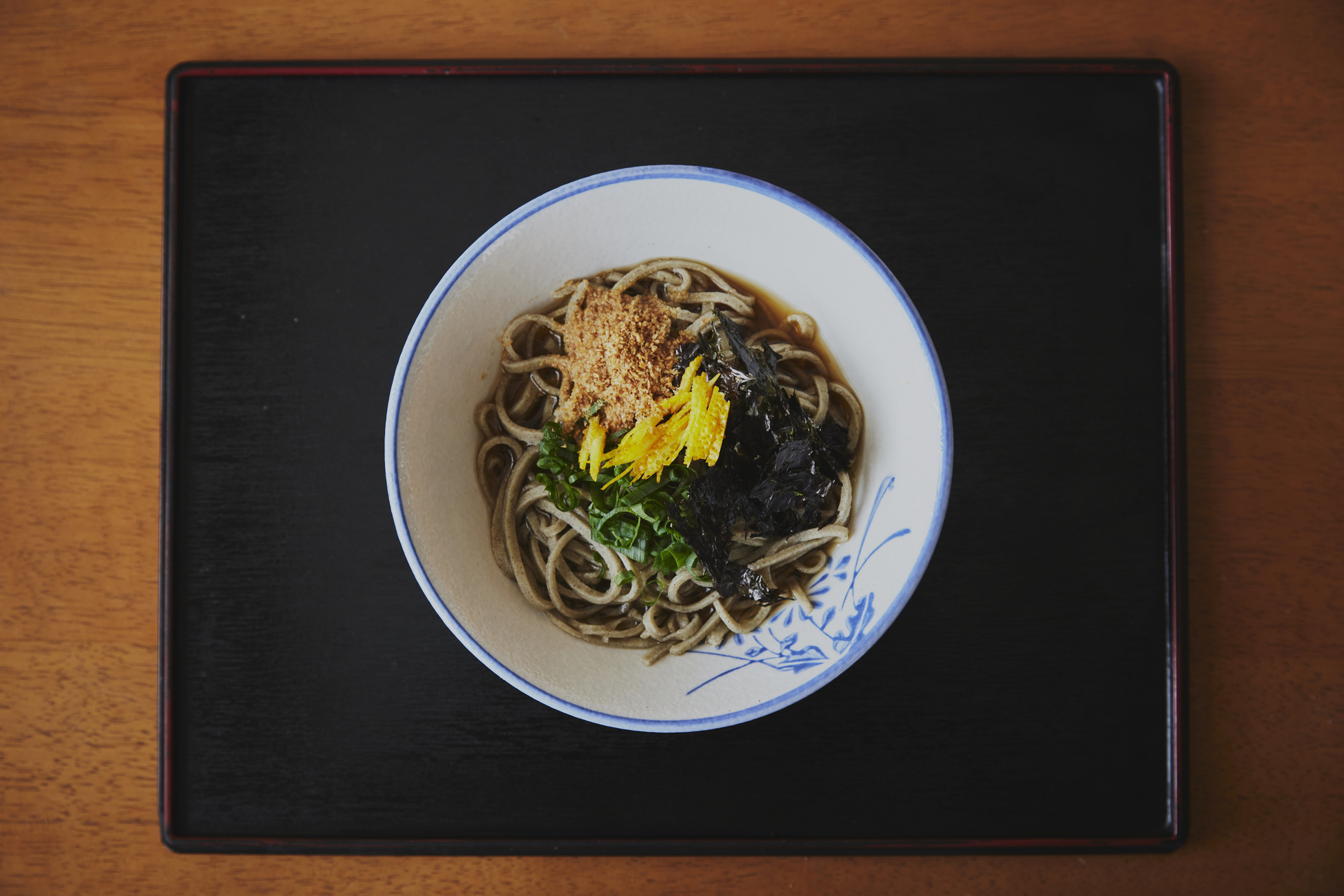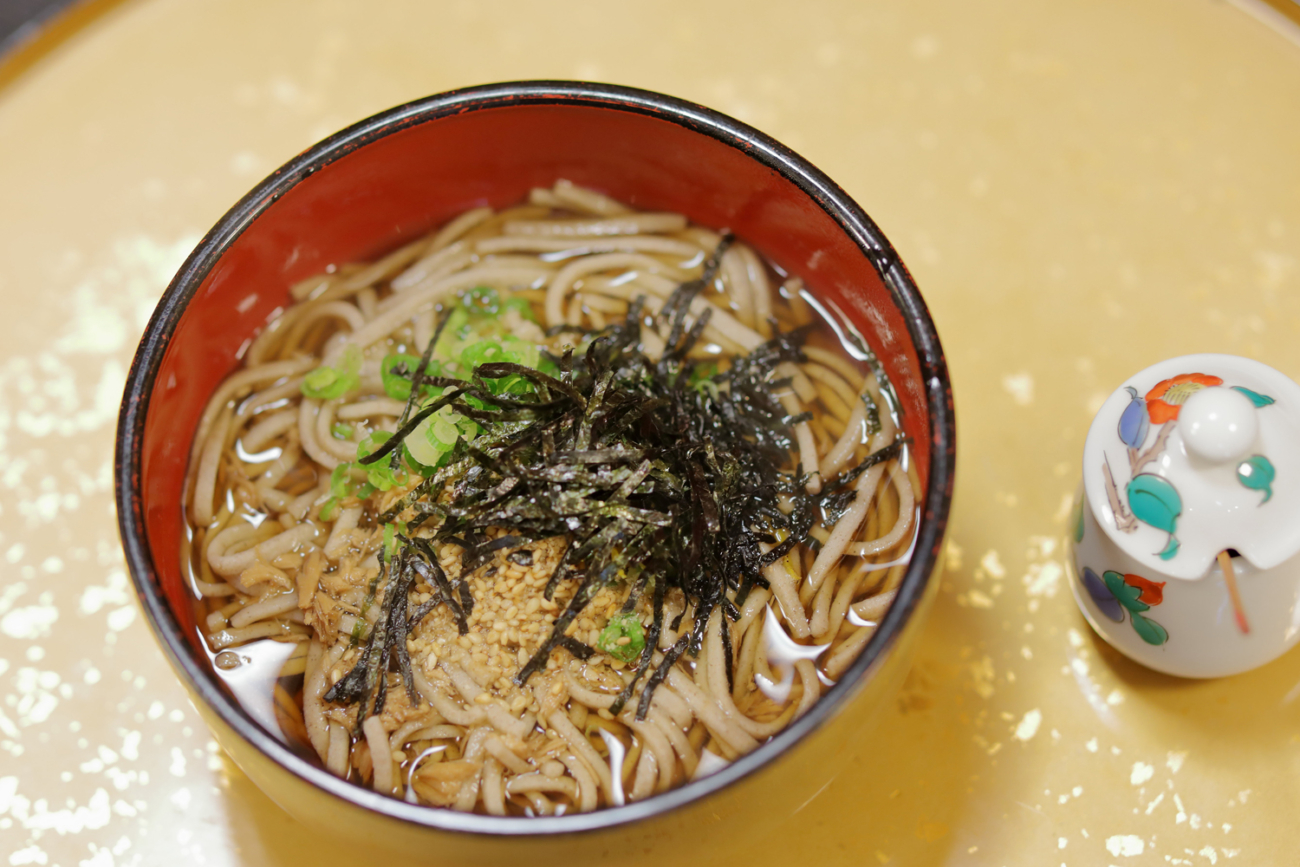No wheat needed

First things first – what are soba noodles, exactly? To put it simply, they are the ones made with buckwheat flour. Owing to this key ingredient, soba noodles are: thinner than udon, lack the wavy quality associated with ramen, and darker in colour than both. Of course, the taste differs too, as does the texture, which is often described as “brittle”. Not everyone is a fan of that last trait, so pretty often wheat flour is added when making the dough, as that yields longer, springy noodles.
But no, not on the islands. Here, the locals happen to like their soba short and thick, so they politely declined the additional glutinous agents, content to merely pour hot water on buckwheat flour, and knead the two-ingredient dough. The Oki soba is a naturally gluten-free item on the menu.
A dish best served hot
It isn’t just the ingredient list that makes Oki soba distinctive. The locals are also particular about the way they serve it. Let me walk you through the preparation process.
Once cooked and washed in cold water, a handful of soba noodles is placed in a bowl. Next, the cook takes a ladle and pours onto them hot fish broth – grilled mackerel or flying fish, to be exact. Lastly, they sprinkle the dish with each of the following toppings: iwanori seaweed, sesame, spring onions and a grated rind of yuzu citrus.
Et voila! Here’s your Oki soba.
When to eat

While these noodles are a local speciality, the islanders don’t regard them as their staple food. On the contrary, buckwheat goodness is to be indulged on special occasions, such as New Year’s Day or important family celebrations. Having said that, Oki soba is available on the menu all year round in many restaurants, especially in Okinoshima Town. I highly recommend giving it a try. Pleasantly sturdy noodles in a flavourful broth reveal yet another facet of the islanders’ cuisine, proving that the local produce and culinary delights can go beyond seafood.
So without further ado, let’s dig in!
Here are some restaurants where you can try Oki soba noodles:
Ajinokura (Okinoshima Town)
Hotel Uneri (Okinoshima Town)
Author: Izabela Raczynska
Photography: M. Koura

